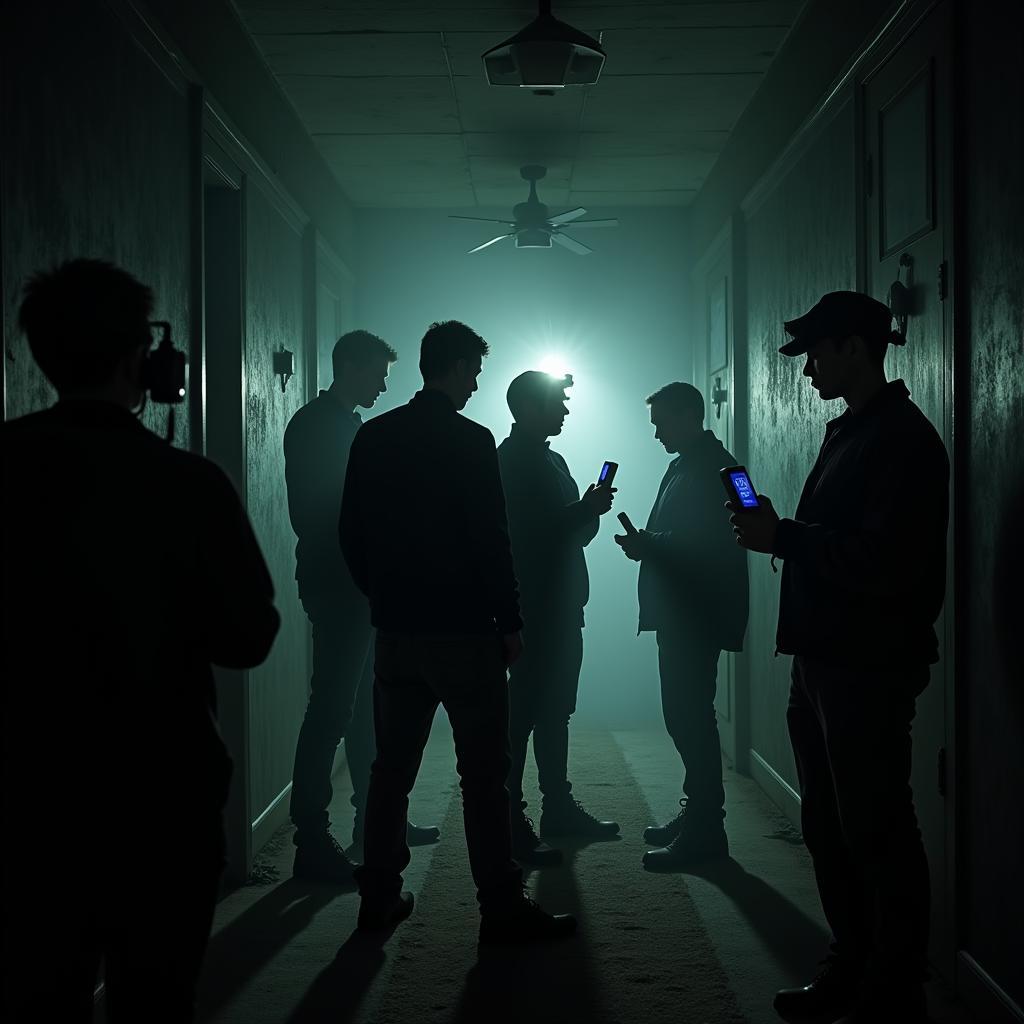Multimodal Research offers a powerful new lens through which to examine the unexplained. By combining diverse research methods, we can gain deeper insights into paranormal phenomena than ever before. This approach moves beyond single-source data collection and embraces a holistic perspective, weaving together qualitative and quantitative data to paint a more complete picture of the mysteries that surround us.
Multimodal research isn’t just about gathering more data; it’s about gathering the right data. By employing a variety of methods, researchers can cross-validate findings and reduce the risk of bias, strengthening the credibility of their conclusions. This approach acknowledges the complex and multifaceted nature of paranormal experiences, recognizing that a single method may not be sufficient to capture the full spectrum of evidence.
What is Multimodal Research and Why is it Important in Paranormal Investigations?
Multimodal research, in the context of paranormal investigation, involves using a combination of traditional and non-traditional research methods. This might include eyewitness accounts, historical records, EMF readings, audio recordings, and even psychic impressions. Why is this important? Because paranormal phenomena are often subjective and difficult to quantify. By combining multiple sources of information, we can begin to build a more objective understanding of these elusive events. Incorporating literacy research can add another layer of depth to the investigation, particularly when analyzing historical texts and written accounts.
One of the key advantages of multimodal research is its ability to address the limitations of individual methods. For example, while EMF readings can detect electromagnetic fluctuations, they cannot tell us what causes those fluctuations. By combining EMF data with other evidence, such as eyewitness testimony and historical context, we can begin to form more informed hypotheses. This is where the power of multimodal research truly shines.
 Multimodal Research in Paranormal Investigation
Multimodal Research in Paranormal Investigation
How to Conduct Multimodal Research in Paranormal Investigations
Conducting effective multimodal research requires careful planning and execution. The first step is to clearly define the research question. What specific phenomenon are you investigating? What are you hoping to learn? Once you have a clear research question, you can begin to identify the most appropriate research methods. This might include:
- Eyewitness Interviews: Gathering firsthand accounts from individuals who have experienced paranormal activity.
- Historical Research: Examining historical records and documents for evidence of past paranormal events.
- Environmental Monitoring: Utilizing tools like EMF meters, temperature sensors, and audio recorders to collect physical data.
- Experimental Investigations: Designing controlled experiments to test specific hypotheses about paranormal phenomena.
“Multimodal research allows us to connect the dots between different types of evidence,” says Dr. Emily Carter, a leading researcher in parapsychology. “It’s like piecing together a puzzle, where each piece of evidence contributes to a larger, more complete picture.”
Addressing Skepticism Through Multimodal Research
One of the biggest challenges in paranormal research is addressing skepticism. Many people dismiss paranormal claims due to a lack of scientific evidence. Multimodal research offers a way to address this skepticism by providing a more robust and comprehensive approach to data collection and analysis. By combining different methods and carefully documenting the research process, we can increase the credibility of our findings and build a stronger case for the existence of paranormal phenomena.
Similar to how nurse anesthetist research topics utilize diverse methodologies for comprehensive understanding, multimodal research in the paranormal aims to provide a holistic view of complex phenomena. This approach is also relevant when considering common postoperative orthopedic problems in PACU research, where a combination of qualitative and quantitative data is crucial for optimal patient care.
 Skepticism and Paranormal Research
Skepticism and Paranormal Research
Conclusion
Multimodal research offers a promising path forward for paranormal investigation. By embracing a more holistic and integrated approach to research, we can move beyond simple data collection and begin to unravel the mysteries that have captivated humanity for centuries. Multimodal research is not just about finding answers; it’s about asking better questions, exploring new possibilities, and pushing the boundaries of our understanding of the universe. If you need assistance with your own Paranormal Research, please contact us. Phone: 0904826292, Email: research@gmail.com or visit us at No. 31, Alley 142/7, P. Phú Viên, Bồ Đề, Long Biên, Hà Nội, Việt Nam. Our team is available 24/7.